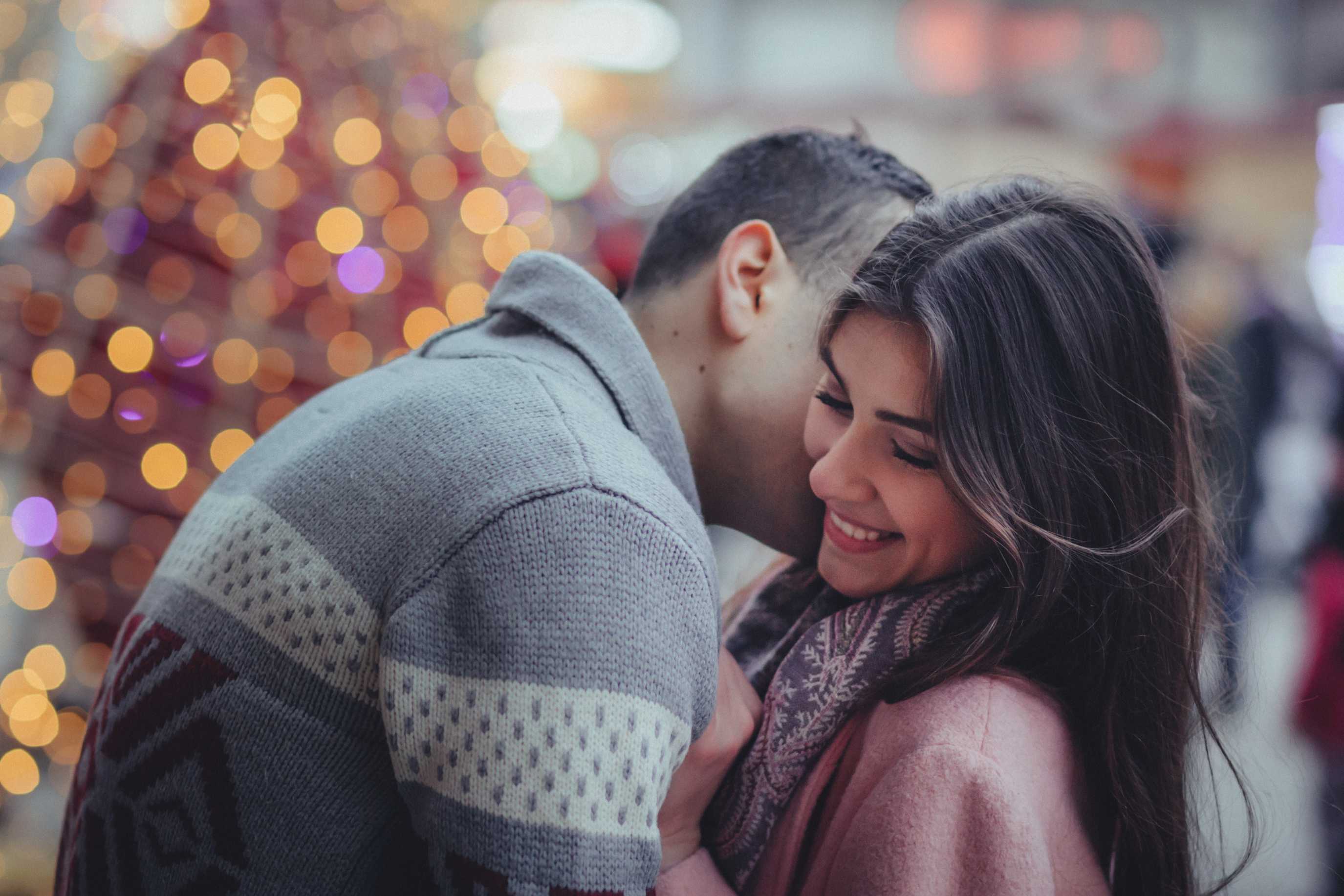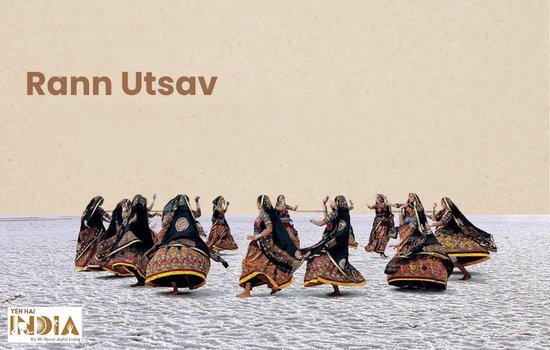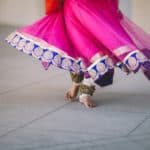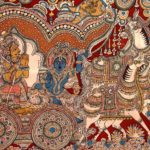Bharatnatyam, a dance form that is elegant yet as dramatic as Bharatanatyam. The grace, the poise, the emotions which are conveyed just through hand and facial gestures can steal anyone’s heart but it all comes to perfection with continuous practice and dedication to excel as it is not as easy as it seems.
Bharatanatyam, which is an art where the dancer dissolves her identity completely and uses her body as an instrument to experience and express the spirit, the emotion which cannot be measured or expressed in words.
Though many have witnessed and heard about this dance form, no one really knows how exactly Bharatanatyam came into existence, from where it originated and what all goes into this mesmerizing dance form.
Let’s start from the beginning!
History of Bharatanatyam
The foundations of Bharatanatyam can be found in ‘Natya Shastra’, an ancient Hindu text for performing arts. Natya Shastra is attributed to the ancient scholar ‘Bharata Muni’ and it is believed that the first complete compilation was between 200 BCE and 200 CE.
Recent direct references relating to the history of Bharatanatyam is said to be found in the Tamil epics ‘Silappatikaram’ and ‘Manimegalai’.
The ancient text Silappatikaram has a story of a girl named Madhavi who was a dancer; it describes the training regime of this dance form as ‘Arangatrau Kathai’ of Madhavi in verses 113 through 159.
It is suggested that Bharatanatyam was fully fledged and well-developed performance art by mid 1st millennium CE as through the carvings on the ‘Kanchipuram’s Shiva Temple’ dating back to 6th and 9th century CE.
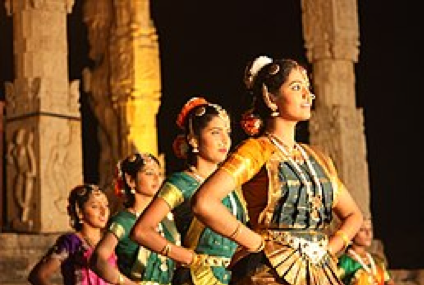
Brihadeshwar temple at Thanjavur has been a major center for Bharatanatyam since 1000 CE
Anti-Dance Movement, Colonial Ban and Decline
Modern authors have argued that Bharatanatyam has come from an ancient ‘Devadasi’ culture though there have been no proper text or archaeological evidence to prove it right.
Various historical sculptures and texts have describe the stories relating to dancing girls but it gives no direct proof of them being courtesans and prostitutes as argued by earlier British Indologists.
According to ‘James Lochtefeld’, Bharatanatyam was only exclusive to Hindu Temples throughout the 19th century and was appearing on stages outside the temple premises by 20th century.
Further, it was Maratha rules of Tanjore who started contributing towards Bharatanatyam.
Upon the arrival of East India Company in the 18th century, and the British Colonial rule in the 19th century, many Indian classical dance forms were discouraged and these performing arts stated to decline.
After the anti-dance movement in 1892 which happened due to Christian missionaries as they questioned and claimed that the Devadasis (Bharatanatyam) were an ‘evidence of harlots, erotic culture and slavery to idols and priests’.
With all these movements happening, finally in the year 1910, Madras presidency altogether put a ban on temple dancing and also Bharatanatyam tradition within the Hindu temples.
The Comeback
The 1910 ban triggered a lot of powerful protests against the dehumanization and stereotyping of temple dancers. The Tamil people were really concerned that a rich dance form with such a rich history is being victimised as an excuse of social reform.
While the British colonial government enforced laws to suppress Bharatanatyam and other Hindu temple dances, people from West such as ‘Esther Sherman’ moved to India in 1930 and learnt the Indian classical dances later changing her name to ‘Ragini Devi’ and joining the movement to revive Bharatanatyam and other classical dance forms.
In the period of political and cultural turmoil, instead of extinction, Bharatanatyam expanded out of Hindu temples and was revived by artists such as ‘Rukmini Devi’ and ‘Yamini Krishnamurti’.
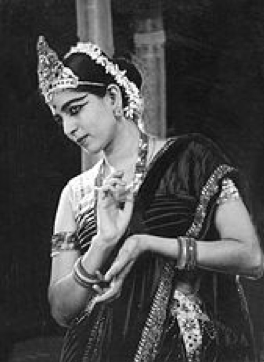
Rukmini Devi Arundale in 1940 helped revive Bharatanatyam after the ban by British colonial government in 1910
The Tamil Hindu migrants reintroduced Bharatanatyam traditions in British Tamil temples by late 20th century.
Repertoire
Like other major classical dance forms, Bharatanatyam also follows the three categories of performance as mentioned in Natya Shastra.
1. Nritta (Nirutham)
The Nritta performance is fast paced and rhythm part of the dance. Here, the emphasis is more on the beauty of motion, speed, range and pattern which engages the audience. This aspect does not have any interpretative aspect, which means there is no story to be told or message to be conveyed.
It is more of a technical performance where the whole point is to engage and capture the senses of the audience.
2. Nritya (Niruthiyam)
Nritya is slow and expressive aspect of the dance, where there is an emotion or a story that needs to narrated through silent gestures and body motions set with the musical notes. The dancer articulates a legend or a spiritual message.
Its main aim is to engage the minds and emotions of the audience and make them believe as even they are a part of it.
3. Natya (Natyam)
Natya is basically a play, which shows a group performing together, but can be acted as a solo performer where there are standardized body movements used by the dancer, indicating a new element or character in the story.
It includes and incorporates the same elements as Nritya.
Sequence of Bharatanatyam
‘Margam’ or the set of presentations in Bharatanatyam has seven-parts in a particular order.
1. Alaripu
The first part of the presentation has rhythmic invocation (vandana) called the ‘Alaripu’. This includes the dancer seeking blessings from Gods and Goddesses, the guru and the gathered performing team.
As it is a pure dance, it helps the dancer in warming up and trying to shift to a single-minded focus.
2. Jatiswaram
Adding melody through performance to the movement of Alaripu is called ‘Jatiswaram’. It remains as a technical performance which pure in form without any words expressed.
3. Shabdam
The next set of performance is the ‘Shabdam’ which means expressing words. He dancer along with vocalists and the instrumental team come together where the dancer presents short compositions with words and meanings in a spectrum of involved moods.
4. Varnam
Varnam is the longest section and the nritya which may take 30-45 minutes and sometimes even an hour depending on the experience of the dancer.
The artist presents the play or main composition through bodily movements, silently communicating texts through gestures and footwork in sync with the music.
The dancer performs complicated moves, such as expressing a verse or an emotion at two speeds along with changes in facial expression.
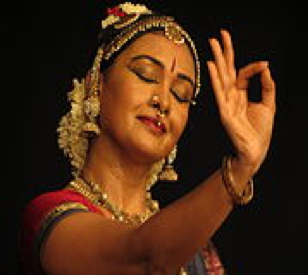
5. Padam
The next set is ‘Padam’ which is filled with simplicity and soft facial expressions as it is usually related to the expression of devotional religious prayer or a spiritual message. The music is soft and light, the chants in the background is intimate and the dancer dwells in emotion as expresses an emotional taste called ‘Rasa’.
6. Thillana
The performance sequence which is the Nritya portion closes as this is the climax and returns to Nritta where a series of pure movement and music are rhythmically performed.
7. Shlokam or Mangalam
The seventh and final part presented in the sequence is either ‘Shlokam’ or ‘Mangalam’. The dancer finally seeks blessings on people all around and there ends the whole sequence.
Attire
- The attire of a Bharatanatyam dancer reminds of a Tamil Hindu’s bridal dress with a ‘Sari’ which are warm in colours with mirrors on it.
- A special pleated cloth is stitched which when worn and during flexing of knees or any footwork appears as a hand fan.
- The sari wraps the back and tightly to the body contour, past one shoulder with a jewelled belt around the waist.
- The dancer is adorned with jewellery on ear, nose and neck along with hair.
- While the make-up is conventional with eyes lined and ringed.
- Hair is tied as a side bun before the braids covered with flowers.
- And for footwork to be more musical along with the set music notes they wear one or more leathered anklets (Ghungroos).
- The dancer’s fingers and feet outline is covered with ‘alta’, which helps audience in easily viewing the hand or foot gestures.

Vocals and Musical Instruments
The music plays an important role in any dance form. As far as in Bharatanatyam, it is the ‘Carnatic’ style of South India.
The vocalist is called the ‘Nattuvanar’, who is also the conductor for the entire performance, he maybe the guru and may also play musical instruments.
The recited text and verses are typically in Tamil, Telugu, Kannada and Sanskrit language.
Instruments mainly used in this dance form include ‘Mridangam’ (double-sided drum), ‘Nadaswaram’ (long oboe made of black wood), ‘Nattuvangam’ (cymbals), the flute, violin and veena.
Mridangam (Double-faced drum)
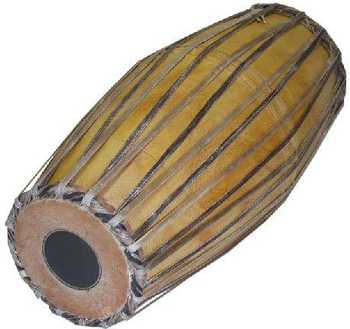
Nadaswaram(long oboe made of black wood)
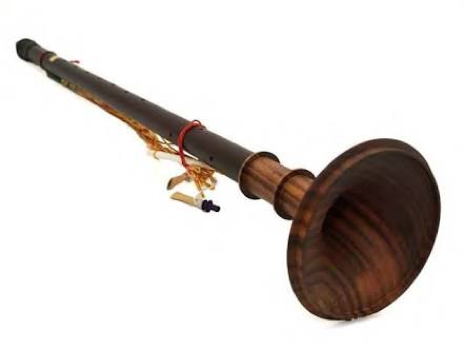
Nattuvangam (cymbals)

Now that you know so much about this beautiful and mesmerizing classical dance form, we sure that you will be interested in adapting and learning Bharatanatyam or at least motivating your loved ones too!




